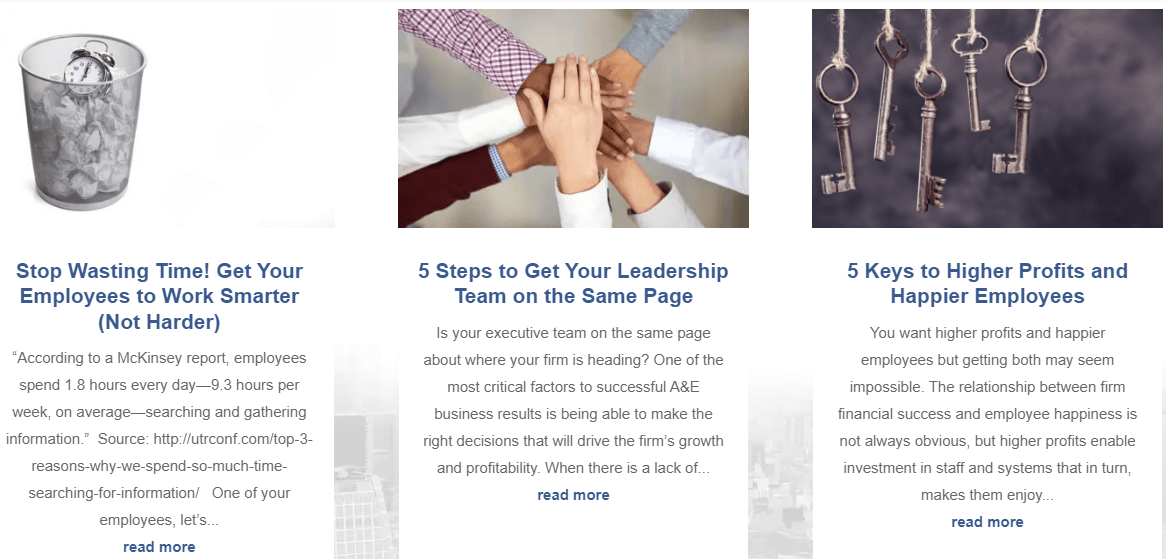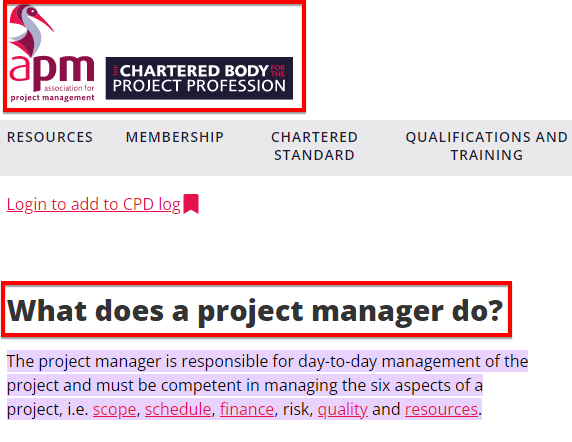-
 Published: Oct 22, 2022
Published: Oct 22, 2022
-
 8 min. read
8 min. read
-
 Abby Fields
Abby Fields Branded Content Specialist
Branded Content Specialist
- Abby is a data-driven content marketer with certifications in inbound marketing and content marketing. She’s written hundreds of articles covering digital marketing topics — a few of her specialties include first-party data, marketing and data analytics, marketing strategy optimization, and SEO. When she isn’t writing or optimizing content, Abby loves to spend time reading the latest mystery novel, having movie marathons with lots of snacks, and jamming out to Shania Twain.
Every once in a while, Google rolls out algorithm updates designed to adjust the results pages to better serve users. And one such recent update was the Google helpful content update of 2022.
This page will explore everything about Google’s most recent update, including what it is and what you need to know when creating content moving forward.
So keep reading!
Bonus: Want to see if Google’s recent update has impacted your website? Try our free SEO checker to view your site’s current search engine performance in just a few seconds!
Looking for an all-in-one SEO audit tool? You’ve found it.
SEO Checker provides data on key metrics to give you:
- Complete SEO score
- Content Grade
- Site Speed Analysis
- and more.

What is the Google helpful content update?
The Google helpful content update is a search engine algorithm change designed to deliver users more relevant, helpful information that satisfies their queries. In other words, this update aims to show users content written by people for people instead of for search engines.
When did Google’s helpful content update start?
The helpful content algorithm update first launched on August 25th, 2022, targeting websites with a large amount of unsatisfying or unhelpful content.
When did Google’s helpful content update finish rolling out?
The update took 15 days to roll out, officially finishing on September 9th, 2022, with some websites seeing changes in their rankings and others seeing no change at all.
What you need to know about the Google helpful content update moving forward
So, how can you ensure you create helpful content that ranks high in the search engine results pages (SERPs) moving forward?
By checking out our list of the five things you need to know about the Google helpful content update of 2022:
1. Stick to your main topic
It might be tempting to write content for almost any topic under the sun to create more opportunities for your site to rank in the SERPs. But with Google’s helpful content update of 2022, this is exactly what you’ll need to avoid.
If you create content outside your niche, you likely won’t have any real knowledge or expertise on the topic to provide any real value to your readers. Plus, your website visitors might become confused if they see content on your site that doesn’t relate to your industry, products, or services.

In other words, writing about topics outside your niche or industry results in unhelpful content.
Google recommends that answering yes to the following questions could indicate that you’re on the right track to creating helpful content:
- Do you have an existing or intended audience for your business or website that would find the content useful if they came directly to you?
- Does your site have a primary purpose or focus?
And answering yes to these questions could be a red flag that you’re writing content for search engines rather than humans:
- Are you producing lots of content on different topics in hopes that some of it might perform well in search results?
- Are you writing about things simply because they are trending and not because you’d write about them otherwise for your existing audience?
- Did you decide to enter some niche topic area without any real expertise but instead mainly because you thought you’d get search traffic?
2. Give sufficient answers to your audience’s questions
Google defines helpful content as content that teaches people something they want to know or helps them accomplish a task.
When you write content for your audience, you should give them the answers they’re searching for or help them find a solution to the problem that led them to your site in the first place.
Put yourself in your audience’s shoes. What pain points are they trying to alleviate? What solutions do they need? What information are they looking for when they type their query into Google?
Once you understand exactly what your audience wants, you can work on creating content that gives them all the information they need.
To help you stay on the right track when it comes to creating helpful content, Google recommends asking yourself the following questions:
- Does your content leave readers feeling like they need to search again to get better information from other sources?
- After reading your content, will someone leave feeling they’ve learned enough about a topic to help achieve their goal?
3. Provide a great user experience (UX)
Google also recommends asking yourself if someone reading your content will leave feeling like they had a satisfying experience.
Ensuring your content provides a positive UX is essential. Google wants to give its users the best possible experience when they use Google’s search engine. That means Google needs to provide its users with websites that not only answer their questions but also provide a great UX.
That’s why UX is one of the most important search engine ranking factors, especially now that Google has released its helpful content algorithm update. If users have a negative experience on your website, you’ll miss out on tons of potential leads and sales.
To ensure your content provides a positive experience for your website visitors, follow these tips:
- Answer your audience’s questions right away instead of beating around the bush
- Incorporate visual elements, like images and videos, to break up your text and give readers a visual demonstration of what you’re talking about
- Make your content easy to skim with bullet points and numbered lists
- Help your readers navigate your page with a table of contents
4. Demonstrate first-hand experience
It has always been essential to create valuable, high-quality content. But with Google’s latest algorithm update, it’s more important than ever.
In fact, following the update, Google recommends asking yourself the following questions:
- Are you mainly summarizing what others have to say without adding much value?
- Does your content clearly demonstrate first-hand expertise and a depth of knowledge (for example, expertise that comes from having actually used a product or service or visiting a place)?
Writing about topics you have first-hand expertise in is one of the best ways to provide value to your readers. No one knows your industry, skills, and products or services better than you.

If you write content about topics you have no experience in, your content won’t be as helpful as it could be.
Highlight your expertise and first-hand experience in your content to give readers in-depth answers to their questions that they can’t get anywhere else.
5. Avoid writing content for search engines first
While it’s still important to follow search engine optimization (SEO) best practices when creating your content, the helpful content algorithm update makes it necessary to ensure that you don’t write content specifically for search engines instead of humans.
That means over-stuffing your content with keywords or letting artificial intelligence (AI) technology completely write up your content won’t cut it when it comes to earning a top spot in the SERPs.
People don’t want to read content that doesn’t make any sense or provide them with the solutions they need. As a result, Google doesn’t want to supply its users with those unhelpful websites.
So, how can you ensure your content isn’t written for search engines first? Google recommends that answering yes to any of the questions below could be a red flag that you’re writing content for search engines rather than people:
- Is the content primarily to attract people from search engines rather than made for humans?
- Are you using extensive automation to produce content on many topics?
- Are you writing to a particular word count because you’ve heard or read that Google has a preferred word count?
- Does your content promise to answer a question that has no answer, such as suggesting there’s a release date for a product when one isn’t confirmed?
As we mentioned above, it’s essential to always consider your audience when creating your content. Write content that covers topics they care about and provides them with the valuable information they’re looking for.
At the same time, you’ll want to ensure your content is SEO-friendly without going overboard. For example, you’ll insert keywords throughout your page naturally, optimize your headings and title tags, and provide a great UX.
260%
increase in organic revenue
198%
increase in organic transactions
150%
increase in organic traffic
3872%
increase in sessions from SEO
Need help reaching the top of the search results?
Creating SEO-friendly content that ranks at the top of the search results is no easy task. It requires an experienced team that constantly stays up to date with Google’s SEO ranking factors and algorithm changes.
Luckily, WebFX’s team of award-winning of SEO specialists does exactly that. Our team has more than 28 years of experience crafting content and implementing SEO techniques that help clients outshine their competitors in the SERPs, generate leads, and boost revenue.
And our team can’t wait to help you do the same. Contact us online or call us at 888-601-5359 to learn more about how our SEO services can drive revenue for your business!
-
 Abby is a data-driven content marketer with certifications in inbound marketing and content marketing. She’s written hundreds of articles covering digital marketing topics — a few of her specialties include first-party data, marketing and data analytics, marketing strategy optimization, and SEO. When she isn’t writing or optimizing content, Abby loves to spend time reading the latest mystery novel, having movie marathons with lots of snacks, and jamming out to Shania Twain.
Abby is a data-driven content marketer with certifications in inbound marketing and content marketing. She’s written hundreds of articles covering digital marketing topics — a few of her specialties include first-party data, marketing and data analytics, marketing strategy optimization, and SEO. When she isn’t writing or optimizing content, Abby loves to spend time reading the latest mystery novel, having movie marathons with lots of snacks, and jamming out to Shania Twain. -

WebFX is a full-service marketing agency with 1,100+ client reviews and a 4.9-star rating on Clutch! Find out how our expert team and revenue-accelerating tech can drive results for you! Learn more
Try our free SEO Checker
Boost your site’s search performance with our free SEO Checker. Analyze your website for optimization tips on titles, headers, content, speed, and more. Get a free report now to enhance rankings on Google, Bing, Yahoo, and beyond!

Table of Contents
- What is the Google Helpful Content Update?
- When Did Google’s Helpful Content Update Start?
- When Did Google’s Helpful Content Update Finish Rolling Out?
- What You Need to Know About the Google Helpful Content Update Moving Forward
- 1. Stick to Your Main Topic
- 2. Give Sufficient Answers to Your Audience’s Questions
- 3. Provide a Great User Experience (UX)
- 4. Demonstrate First-hand Experience
- 5. Avoid Writing Content for Search Engines First
- Need Help Reaching the Top of the Search Results?


How Is Your Website’s SEO?
Use our free tool to get your score calculated in under 60 seconds.
Try our free SEO Checker
Boost your site’s search performance with our free SEO Checker. Analyze your website for optimization tips on titles, headers, content, speed, and more. Get a free report now to enhance rankings on Google, Bing, Yahoo, and beyond!







